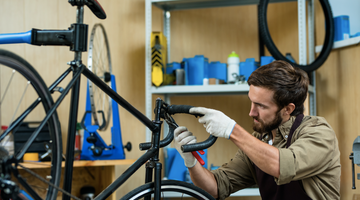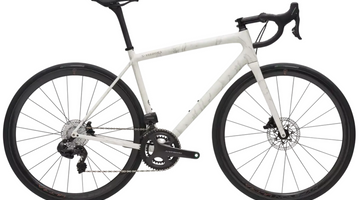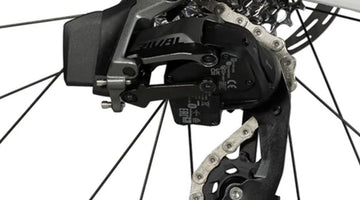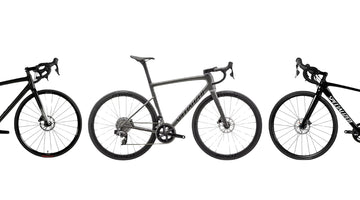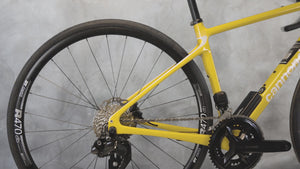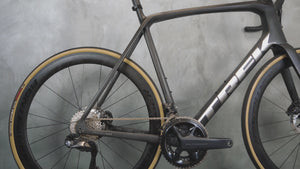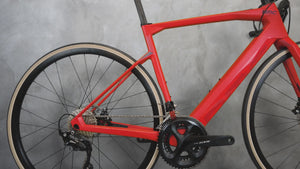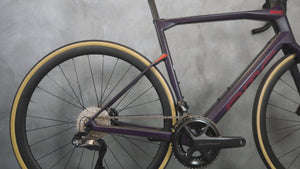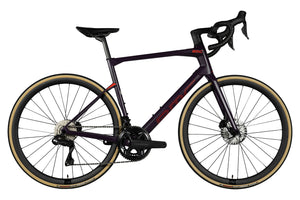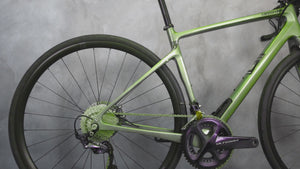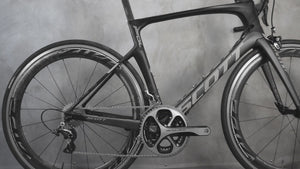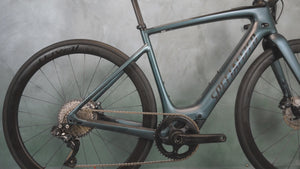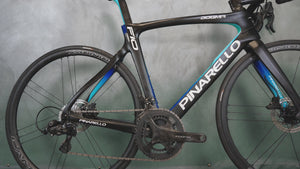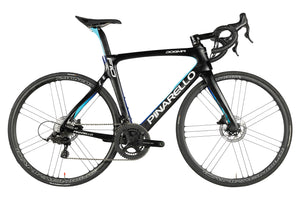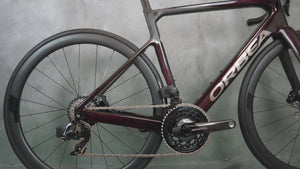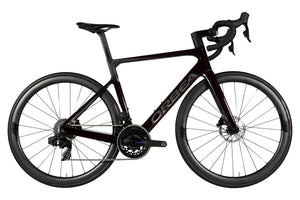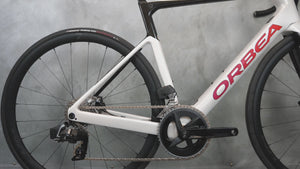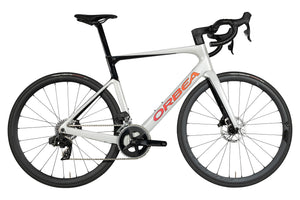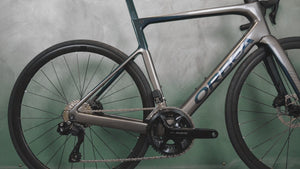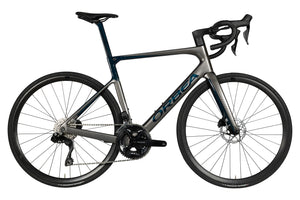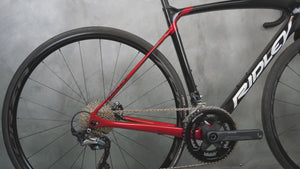Look or Shimano Road Pedals: Which Ones to Choose?
In this Article
Published on 29 May 2024
When you start cycling regularly, it is recommended to invest in clipless pedals. These pedals, equipped with cleats, keep your feet securely attached, thus improving the efficiency and control of your pedaling.
This system appeared in 1984 with the LOOK brand, which launched the first clipless pedals. Since then, clipless pedals have become the standard as they provide a real performance boost. Indeed, there is a more efficient power transfer and a smoother pedaling technique. However, it is true that when starting out, using clipless pedals is always a little hurdle to overcome because of that fear we all know: the fear of getting stuck, not being able to unclip at a red light, and bam, having the least stylish fall in history, namely falling while stopped in front of everyone 🫠
But don't panic, the trick is to practice clipping in and out of the pedals regularly the first few times and to anticipate stops. Once this motion becomes automatic (pun intended) and the movement is mastered, it becomes something trivial.
So, how do you choose your pedals and cleats when starting out? In this article, we will explore the different offerings from the two biggest brands in this market, namely Look and Shimano for road cycling. This will give you an overview of what's available and help you make your choice.

Look and Shimano: the two leading brands in the pedal and cleat market
There are of course other pedal brands like Time, BBB, Neatt, Bontrager, etc. But the most widespread, the ones that are made and sold the most, remain Shimano and Look. Both manufacturers offer quality products and have a varied range of choices at affordable prices.
Look
The brand Look is truly pioneering when it comes to clipless pedals. They managed to adapt their ski fixation concept to cycling. For the record, just after releasing their first model, the PP65, Bernard Hinault used it the following year in the Tour de France and spoke of this pedal as "the most important technological evolution of the last 30 years." Enough to convince everyone of this concept.
Shimano
Shimano pedals came a few years later to the market in 1990 with their SPD (Shimano Pedaling Dynamics) concept, which is still used today. Shimano was the pioneer of mountain bike pedals. It wasn't until 2003 that the brand introduced road pedals with the SPD-SL, which features a system specific to road cycling with a wider and longer pedal body, and with only one side clipable.
Which bike cleats to choose?
The choice of cleats is very important for regular cyclists. Indeed, as one of the points of contact between you and your bike, it determines how you will feel on the bike. If you want to be comfortable, as comfortable as possible, and limit the problems that a bad position can cause, we strongly recommend getting a postural study done. In the meantime, feel free to check out our article on the subject.
To keep it simple, Look and Shimano offer 3 different types of cleats, which have different colors depending on the degree of freedom you choose. The higher the degree of freedom, the more range of motion you have, and thus your foot will be more free. This choice is very personal and depends on individual habits, sensations, and preferences. However, generally, when you are used to a certain degree of freedom, it is preferable to keep it to avoid changing your pedaling and potentially causing changes in position.
Here is a summary table of the different cleats according to the manufacturers:
|
Look |
Shimano |
||||
 |
 |
 |
 |
 |
 |
|
0° |
4,5° |
9° |
0° |
2,5° |
6° |
What pedals according to your practice?
To choose your pedals, you need to know your practice and your budget. Indeed, there can be a real difference between so-called entry-level pedals and high-end pedals, ranging from simple to triple in price. Knowing the usage you want to make of them can be useful to know if you want lightweight carbon pedals or if slightly lighter pedals are of little importance to you.
Again, here is a summary table of pedal models according to practices:
|
Look |
Shimano |
|
|
Route |
|
|
|
VTT / Gravel |
|
|
|
Look |
Shimano |
|
|
Road |
|
|
|
Endurance |
|
|
|
Comfort |
|
The Differences: Understanding Everything
The main difference between the models lies in the material used, which affects the weight.
- What is the difference between Look Keo Blade Ceramic and Blade Ceramic Ti?
On the Keo Blade Ceramic Ti, the pedal axle is made of titanium, whereas on the Keo Blade, it is made of Chromoly+.
- What is the difference between Look Classic 3 and Classic 3 Plus?
As above, the difference lies in the material used. For the Classic 3 Plus, the contact area is made of stainless steel rather than composite. This optimizes pedal rigidity.
- What do the designations R9100, R8000, R7000 correspond to?
The numbers correspond to the Dura-Ace, Ultegra, 105, and Shimano series. Components in the Dura-Ace R9100 series are made with the lightest and most technologically advanced materials to provide maximum performance. For the 105 P-R7000, the components will be less light and performant but more robust and reliable. So, at Shimano, the higher the number, the more high-end it is.
Price Ranges
- Entry-Level:
At Look, the most accessible pedals, the entry-level ones, are the Keo Classic 3, currently available for around forty euros online. The Shimano entry-level pedals, namely RS500 and R550, are in the same price range.
- Mid-Range
At Look, one might opt for the Keo 2 Max at around €75. This model features a lighter hollow chromoly+ axle and a wider stainless steel plate on the pedal body for greater durability. These pedals are available with a composite body or a lighter carbon body.At Shimano, it would rather be the SPD-SL Shimano PD-R7000. Like at Look, it is possible to have the version with a carbon or steel body. However, these pedals are slightly more expensive, starting at around €90 for those without carbon and €115 with it.
- High-End
Finally, the Keo Blade pedals are the high-end pedals of the brand, available from €130. These pedals are used by many professional riders because they are both more aerodynamic and very light: they use a carbon blade spring. Adjusting the tension is also simplified thanks to Blade technology. Instead of adjusting the tension by tightening a spring, you can just change the blades at the back of the pedal. There are 4 different blades; the higher the number, the higher the tension. Number 8 is the serial number. If you want more tension, Look recommends using 12 for regular cycling, 16 for sprinters, and 20 for track cycling.

Look also offers power meter pedals, with a mono version starting from €659 and a duo version going up to €1,099. To find out about the different types of power meters, feel free to check out our article on the subject.
If you like our comparative articles, we have also made some between SRAM and Shimano on the different groups: Road, MTB, Gravel
Conclusion
In conclusion, the pedals from these two major brands are very similar. In terms of quality, Shimano and Look offer carbon pedals of very similar weight. Furthermore, since the price difference is not significant, the choice between the two brands will mainly depend on your aesthetic preferences and your loyalty to one or the other.
If our buying guides interest you, we have several more:



